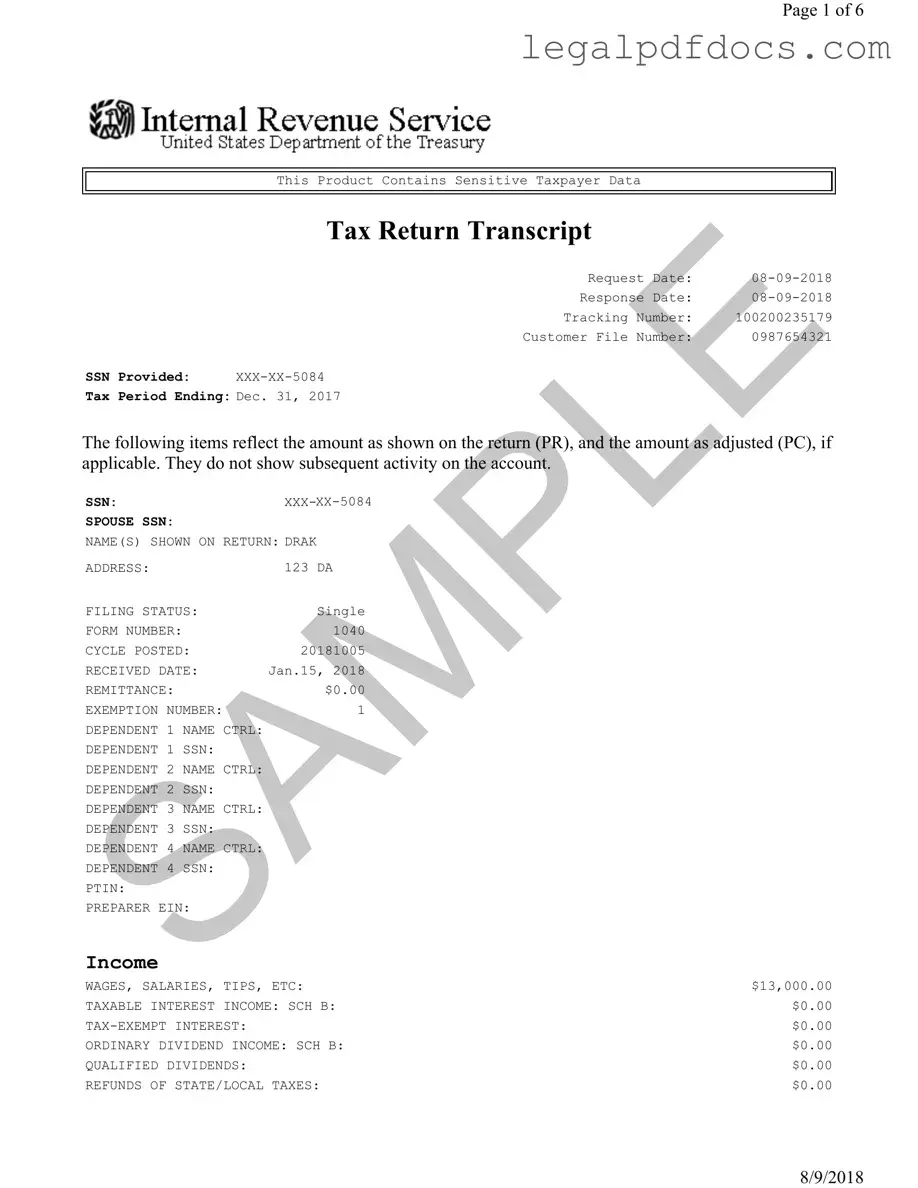Fill Out a Valid Sample Tax Return Transcript Template
A Sample Tax Return Transcript is a document that provides a summary of a taxpayer's income, deductions, and tax liabilities as reported on their tax return. It is often used for verification purposes, such as applying for loans or financial aid. Understanding this form is crucial for managing your financial obligations effectively, so take the first step by filling out the form below.
Open Sample Tax Return Transcript Editor Here
